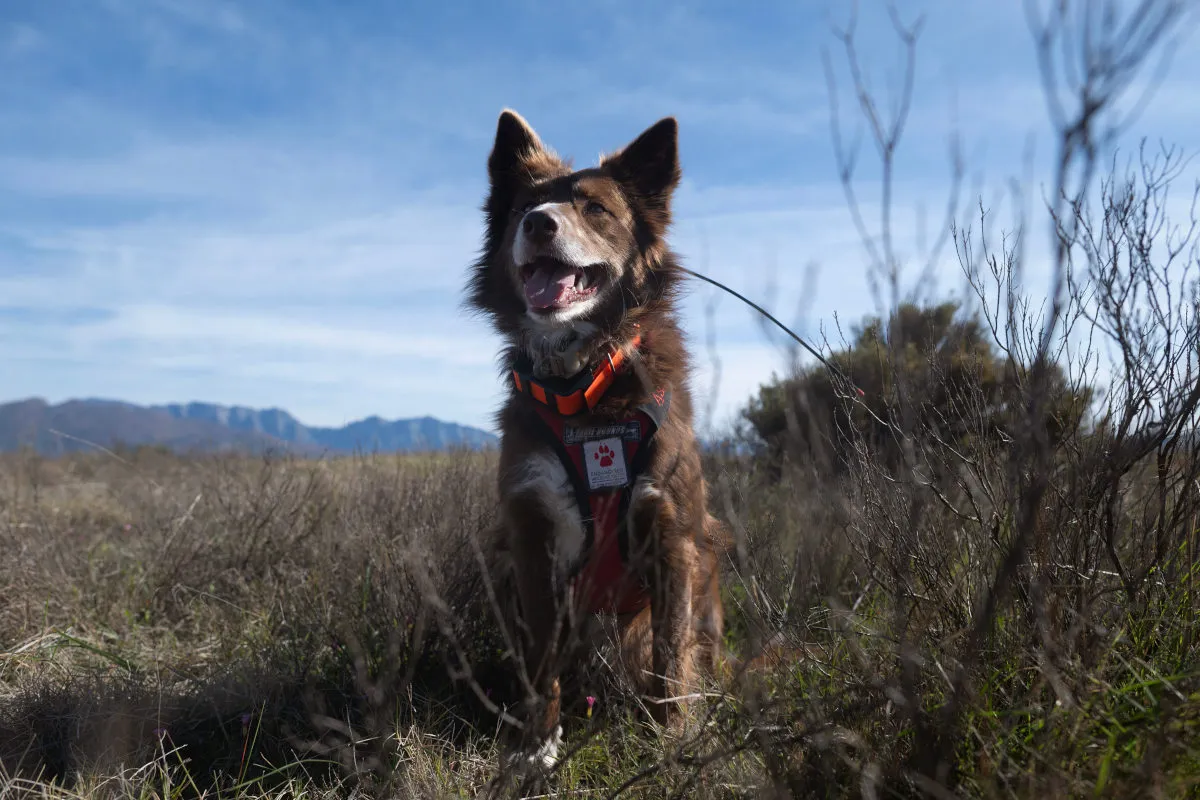
Dogs help track South Africa’s endangered tortoises
A tiny reptile lay hidden in the tall grass, its shell covered in yellow star-like patterns, a clear indication it was a geometric tortoise.

With her snout to the ground, a border collie named Delta zigzagged through shrubs on a private nature reserve near Cape Town, urgently sniffing for critically endangered tortoises.
She suddenly stopped in front of a small bush and lay down, signalling a discovery as her handler stepped in to inspect the area.
Tucked away in the tall grass lay a tiny reptile, its shell adorned with yellow star-like patterns, identifying it as a geometric tortoise, a species found only at Africa’s southern tip.
“It’s an adult female, you can tell by its flat belly,” said Esther Matthew, the dog’s handler and a conservation officer for South Africa’s Endangered Wildlife Trust.
She explained that the organisation uses canines to sniff out the endangered species by “building positive association with the tortoises’ odour”, throwing Delta a foam frisbee as a reward.
Dogs are five times more effective than humans at this type of search and “also help us find the smaller tortoises which are often overlooked, the hatchlings and the juveniles”, Matthew said.
“We’ve seen a dramatic increase in the number of finds with the dogs.”
Shrinking numbers
Their assistance now plays a vital role in studying and protecting the geometric tortoise, a species found only in South Africa’s Western Cape and teetering on the edge of extinction.
Biologist Andrew Turner, who works for the conservation authority CapeNature, says the wild population had already dropped to around 1,500 individuals by the early 1990s.
It is now estimated at only several hundred animals with “declines pretty much across the entire remaining range of this species”, he told AFP.
On the nature reserve, Delta and Matthew – helped by colleagues searching the bushes with sticks – found a dozen of the hardy reptiles.
“We record all the tortoises we can find, all the data, measurements and weight,” Delta’s handler explained.
‘Creating corridors’
With the species’ natural habitat shrinking due to agriculture and urban expansion, these surveys have become all the more critical, Turner said.
“There are very few places left in the Western Cape that still support these tortoises. It’s really just a couple of nature reserves and pieces of good habitat left on people’s private property,” he added.
“The remaining patches of vegetation are not really connected to each other anymore. There are farmlands in between, roads, towns and industries so there is limited ability for the tortoises to disperse and rescue other populations.”
Scientists say increased droughts, predation, and fires—intensified by climate change—have made these fragmented tortoise populations even more vulnerable.
Turner also warned that poaching, both of the tortoises and the plants they rely on for food, poses a serious threat.
“They are down to such small levels that they actually need as much assistance as they can get,” he said.
To save the species, the Endangered Wildlife Trust has looked at building “partnerships” with landowners and communities living in the animals’ habitat.
“The biggest thing is… creating corridors where species can work through,” explained Zanne Brink, who leads the organisation’s dry lands conservation programme.
“Our biggest challenge is to get enough information to prevent critical biodiversity areas from being lost to unsustainable land use.”